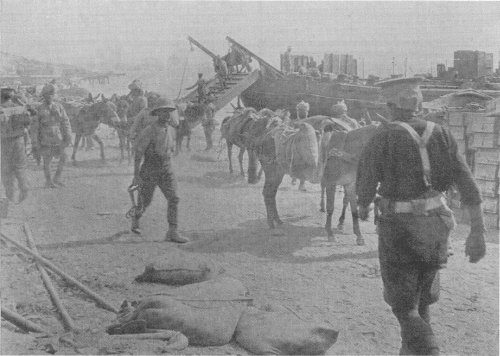- Author
- Francis, Richard
- Subjects
- Ship design and development, History - WW1
- Tags
-
- RAN Ships
- None noted.
- Publication
- September 2001 edition of the Naval Historical Review (all rights reserved)
Particulars:
| Displacement | 200 tons |
| Dimensions | 105ft 6″ x 21 x 7ft 6″ |
| Guns | Unarmed (The crew may have had side arms for self-defence or covering fire on the beaches) |
| Machinery | steam or diesel engines, speed 8 kts |
| Crew | 4 |
| Builders | various |
| Laid Down | 1915 |
| Completed | 1915- 18 |
History and Notes:
A special variant of self-propelled lighter was designed by the British naval forces for amphibious operations, carrying troops and field guns from a ship to an open beach. They were fitted with a ramp over the bows and powered by a small diesel engine. They were employed during the landings at Gallipoli in 1915.

Winston Churchill claims to have proposed the idea of “using tanks to run ashore from specially-constructed landing craft on beaches where they had not been expected” when Minister of Munitions in a scheme forwarded to the Lloyd George cabinet in 1917. (Although this is after the debacle at Gallipoli, it may be reasonable to suppose that he had researched this idea some time beforehand). He states that he produced the following proposal without expert assistance, as a scheme for the capture of the Frisian Islands, Borkum and Sylt in the North Sea. He quotes:
“The landing of the troops upon the island under cover of the guns of the Fleet should be aided by gas and smoke from torpedo-proof (sic) transports by means of bullet proof lighters. Approximately 100 would be provided for landing a Division. In addition a number – say 50 – tank-landing lighters should be provided, each carrying a tank or tanks and fitted for wire cutting in its bow. By means of a drawbridge or shelving bow the tanks would land under their own power, and prevent the infantry being held up by wire when attacking the gorges of the forts and batteries.” Churchill continues:
“…the landing could be effected under the shields of lighters, proof against machine gun bullets, and too numerous to be affected by heavy gunfire; and tanks employed in even larger numbers than are here suggested, especially the quick-moving tank and lighter varieties, would operate in an area where no preparations could have been made to receive (oppose) them.” Churchill was here investigating methods of counter-attacking the Germans after the “Miracle of Dunkirk” to regain the initiative after the fall of France, and began to plan ahead, mindful of his WWI proposals above, which had ‘… slumbered in the archives of the Committee of Imperial Defence. He notes that he had not printed this item before in his book “The World Crisis”, which was fortunate, because he realised that his writings would have been read with attention by the current German staff. More detailed ideas later bore fruit in the creation of the Mulberry harbours during the subsequent invasion of German-occupied France in 1944.
After WW II a series of conferences was held in UK by the Royal Institution of Naval Architects to examine the technological advance of wartime construction of specialist vessels and warships, with papers published in 1947. They found that the Japanese had found it necessary to employ landing craft in their attacks on China, but no other navy at that time possessed any ships especially designed for the purpose (other than plans for the conversion of passenger liners or troopships to assault ships). As an introduction to the conference on amphibious craft, a Mr Walter Pollock stated: “It is a pity that the original power-driven landing craft that I designed for Lord Fisher in 1915 were not included (in the drawings and photographs presented) because the Admiralty built about 240 of these X-Lighters under my supervision.” (Particulars are given above.)
“Most of them were fitted with powerful oil engines aft, running at slow revolutions; those with 80 BHP had a good turn of speed. Each lighter, nicknamed “Black Beetle”, carried a platoon of soldiers that could be disembarked over the hinged brow forward in less than two minutes. Some of the lighters carried ammunition, stores and so on. These were undoubtedly the first landing craft (of the 20th century) and the prototype of many of those built in 1940, twenty-five years later.”




